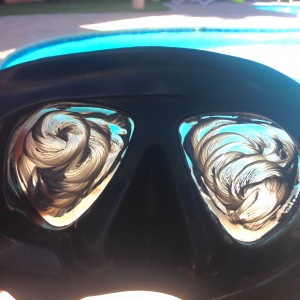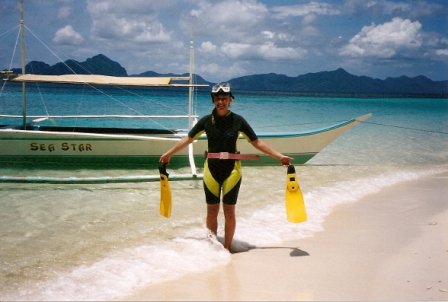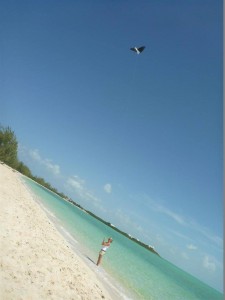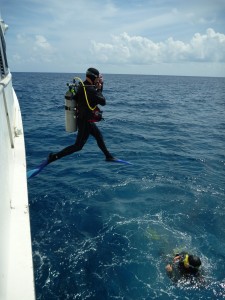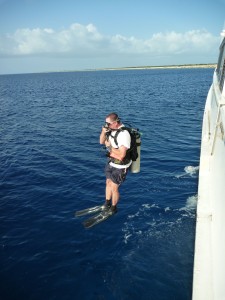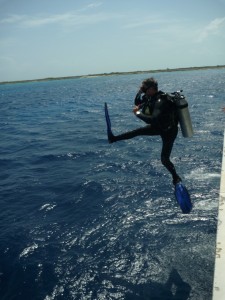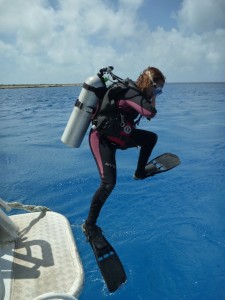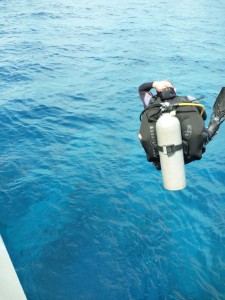I certainly remember the first time I put on a scuba diving mask and went for a dive in the ocean. I was in awe at all of the amazing creatures and wildlife and colours! However, if someone hadn’t told me some unusual ‘tricks’ on how to prepare my scuba mask before jumping in, my view beneath the sea would have been seen through a hazy fog. Now that I am an experienced scuba diving instructor with several thousands of dives, I am excited to pass down my knowledge of how to effectively defog your scuba mask! And as you know, your scuba mask is your window into this spectacular other world, so you will want to ensure that it is in top condition for 100% pure underwater enjoyment!
Preparing a Brand New Scuba Mask
When you first buy a scuba mask, you will be so excited to try it out, you may even wear it in the bathtub! But – wait – you MUST prepare your mask before you jump in. The tempered glass in your scuba mask contains a layer of film from the manufacturing of the product that needs to be removed prior to being worn. You won’t be able to see or touch this film, but it will cause your scuba mask to be super foggy no matter how many defog products you use on it.
You may have heard of the traditional “toothpaste” method, but I like to do something I like to call: “The Enhanced Toothpaste Method”. It is a combination of burning your scuba mask with a lighter as well as using toothpaste. Most people are surprised when I make the suggestion of burning their scuba mask with fire, but when they see (literally!) the results, they are always happy and grateful!
STEP 1: THE BURN
In order to defog the mask effectively by burning it, I first ensure I am in a protected area away from wind. Next, I carefully hold the flame of the lighter to the inside glass area of the lens until it is all black. You will start to see the invisible film burning away from the heat of the lighter. It’s really neat! I am always very careful around the silicone skirt of the mask and I never hold the lighter to a scuba mask that has glued-on bi-focals or prescription lenses as I am worried the heat from the flame will affect the glue. Also, be careful of your thumb as the lighter gets very hot when you maintain the flame for more than just a second or two.
Now the lenses will be very hot, so after you burn the scuba mask, set it aside to let it cool off and don’t touch the hot lens. Just like any glassware, remember that any sudden change from very hot to very cold can cause the glass to shatter – be careful!
STEP 2: THE TOOTHPASTE
Your next step will be to take some toothpaste (not the gel kind) and with your finger dab some on both sides of the inside of the lenses. Rub the black from the burning around with the toothpaste thoroughly and then let it sit to dry. I usually wait an hour or two before I rinse it out; however, if you don’t have the time, just go ahead and rinse it right away; there’s a good chance it will still work.
STEP 3: THE RINSE
Before diving, put your scuba mask under a tap and use water to rinse out the black from the burning and the toothpaste. You can use your fingernail to get around the skirt the touches the lens in case some of the black toothpaste seeped under there.
Now you are ready to scuba dive!
Before every scuba dive, you will need to do another type of defog; however, it won’t be as extensive as for a brand new scuba mask. The reason scuba masks get foggy is most often due to the warmth and oil on your skin reacting with the cold of the water and the air in between. Sunscreen and make-up also contribute to the likelihood of a foggy mask.
Different ways to defog your mask:
- Au Naturale
We call this very special form of defogging your scuba mask “Au Naturale” because our own body generates it all naturally in the form of saliva. That’s right – spit! This method of defogging your scuba mask is perfect because you do not need to buy any special concoction and it is safe for the environment. Although initially you may feel embarassed to spit into your mask, with practice, you can defog your mask using your own saliva in a discreet and effective manner. Very important! I found this method to work best when you spit into your mask when it is completely dry. If you take off your mask in the water and then spit into it, I found that it is very likely to become foggy during the dive. Remember – dry mask, spit, rub, rinse with water, put on your mask, and DIVE!
- Commercial Defog
This is the type of defog you can buy at any scuba shop. There are a million different types, but they are basically all the same. If you would like to go this route, I recommend making sure it is safe for the reef and environmentally friendly. Usually scuba divers will put this inside their scuba mask, swish it around with their finger and then rinse and go! Divers tend to have a favourite brand and swear by it.
- Baby Shampoo or dishwashing soap
This is a very economical choice in the world of defogging your scuba mask. Many dive boats will carry an empty plastic water bottle container with a hole in the top and fill it about a quarter full of baby shampoo and the rest water. Even just a little bit of soapy water will be enough to defog your mask. Always remember to completely rinse your mask otherwise the residue soap will sting your eyes underwater – even the baby shampoo will cause some tears if you use too much!
Tips to prevent a foggy scuba mask even if you have defogged it!
- If your face is sweaty and hot, it is a good idea to splash some cool water on it to give it a quick rinse before you put your mask on.
- Before putting your choice of defog on your scuba mask, ensure that the lens is dry.
- You can apply defog to your mask anytime prior to jumping in the water; however, you should rinse the defog out only moments before jumping in. If you have rinsed it out, but then are delayed jumping in and you are not ready to put your mask on your face, leave a layer of water in your mask until you are ready.
- Once you have defogged and rinsed your scuba mask, put your mask on your face and don’t take it off! Moving your mask to your forehead, neck, or into the water basically eliminates any defogging you had just done.
I hope these tips and techniques allow you some fantastically clear lenses so you have the best possible view under the sea!
Happy Diving!

